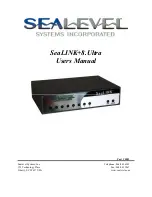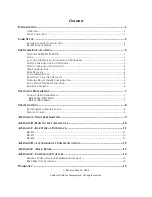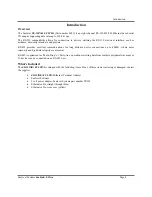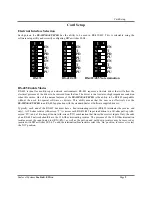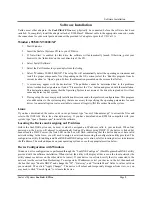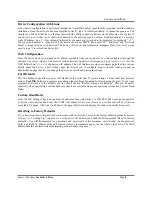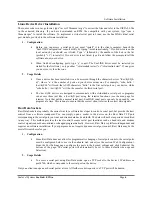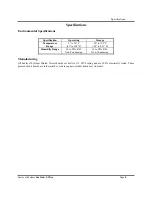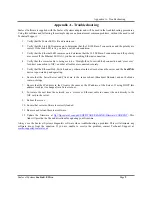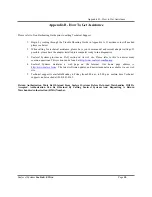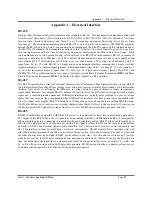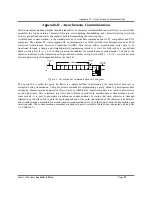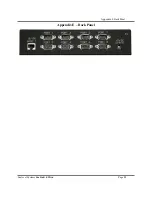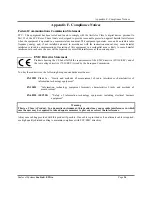
Appendix C – Electrical Interface
Sealevel Systems
8.Ultra
Page
11
Appendix C - Electrical Interface
RS-232
Quite possibly the most widely used communication standard is RS-232. This implementation has been defined and
revised several times and is often referred to as RS-232-C/D/E or EIA/TIA-232-C/D/E. It is defined as “
Interface
between Data Terminal Equipment and Data Circuit- Terminating Equipment Employing Serial Binary Data
Interchange
”. The mechanical implementation of RS-232 is on a 25-pin D sub connector. The IBM PC computer
defined the RS-232 port on a 9 pin D sub connector and subsequently the EIA/TIA approved this implementation as
the EIA/TIA-574 standard. This standard has defined as the “
9-Position Non-Synchronous Interface between Data
Terminal Equipment and Data Circuit-Terminating Equipment Employing Serial Binary Data Interchange”
. Both
implementations are in wide spread use and will be referred to as RS-232 in this document. RS-232 is capable of
operating at data rates up to 20K bps / 50 ft. The absolute maximum data rate may vary due to line conditions and
cable lengths. RS-232 often operates at 38.4K bps over very short distances. The voltage levels defined by RS-232
range from -12 to +12 volts. RS-232 is a single ended or unbalanced interface, meaning that a single electrical
signal is compared to a common signal (ground) to determine binary logic states. A voltage of +12 volts (u3
to +10 volts) represents a binary 0 (space) and -12 volts (-3 to -10 volts) denote a binary 1 (mark). The RS-232 and
the EIA/TIA-574 specification define two types of interface circuits
D
ata
T
erminal
E
quipment (
DTE
) and
D
ata
C
ircuit-Terminating
E
quipment (
DCE
).
The Sealevel Systems Adapter is a DTE interface.
RS-422
The RS-422 specification defines the electrical characteristics of balanced voltage digital interface circuits. RS-422
is a differential interface that defines voltage levels and driver/receiver electrical specifications. On a differential
interface, logic levels are defined by the difference in voltage between a pair of outputs or inputs. In contrast, a
single ended interface, for example RS-232, defines the logic levels as the difference in voltage between a single
signal and a common ground connection. Differential interfaces are typically more immune to noise or voltage
spikes that may occur on the communication lines. Differential interfaces also have greater drive capabilities that
allow for longer cable lengths. RS-422 is rated up to 10 Megabits per second and can have cabling 4000 feet long.
RS-422 also defines driver and receiver electrical characteristics that will allow 1 driver and up to 32 receivers on
the line at once. RS-422 signal levels range from 0 to +5 volts. RS-422 does not define a physical connector.
RS-485
RS-485 is backwardly compatible with RS-422; however, it is optimized for party line or multi-drop applications.
The output of the RS-422/485 driver is capable of being
Active
(enabled) or
Tri-State
(disabled). This capability
allows multiple ports to be connected in a multi-drop bus and selectively polled. RS-485 allows cable lengths up to
4000 feet and data rates up to 10 Megabits per second. The signal levels for RS-485 are the same as those defined
by RS-422. RS-485 has electrical characteristics that allow for 32 drivers and 32 receivers to be connected to one
line. This interface is ideal for multi-drop or network environments. RS-485 tri-state driver (not dual-state) will
allow the electrical presence of the driver to be removed from the line. Only one driver may be active at a time and
the other driver(s) must be tri-stated. RS-485 can be cabled in two ways, two wire and four wire mode. Two-wire
mode does not allow for full duplex communication, and requires that data be transferred in only one direction at a
time. For half-duplex operation, the two transmit pins should be connected to the two receive pins (Tx+ to Rx+ and
Tx- to Rx-). Four wire mode allows full duplex data transfers. RS-485 does not define a connector pin-out or a set
of modem control signals. RS-485 does not define a physical connector.

